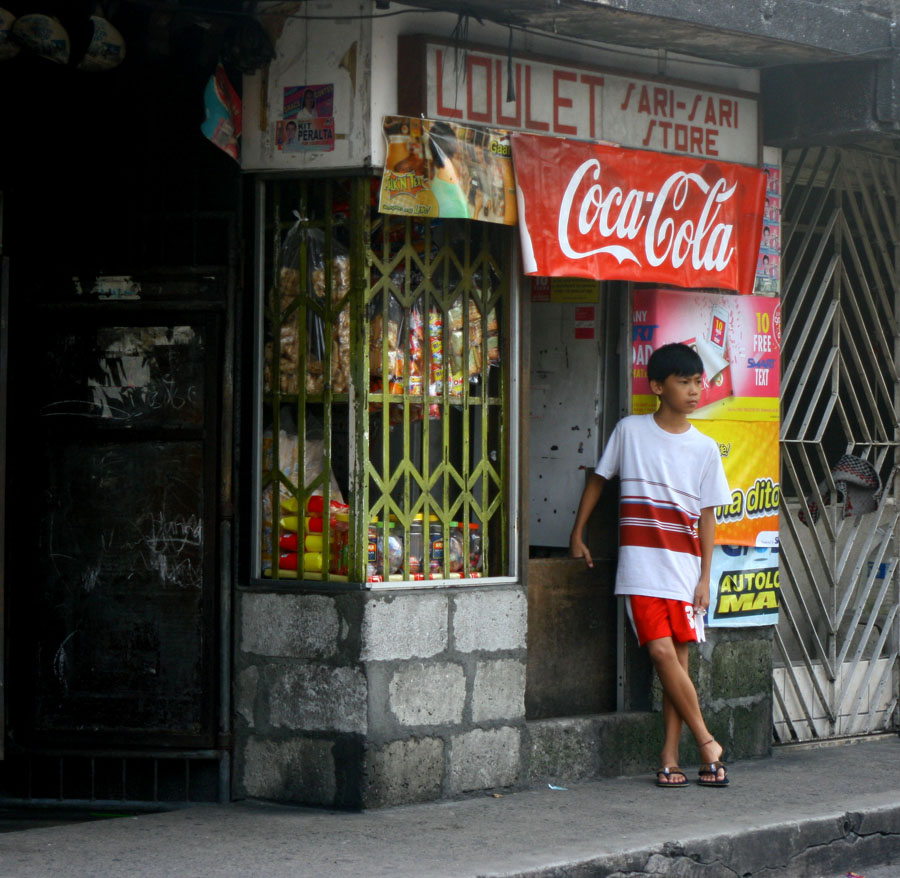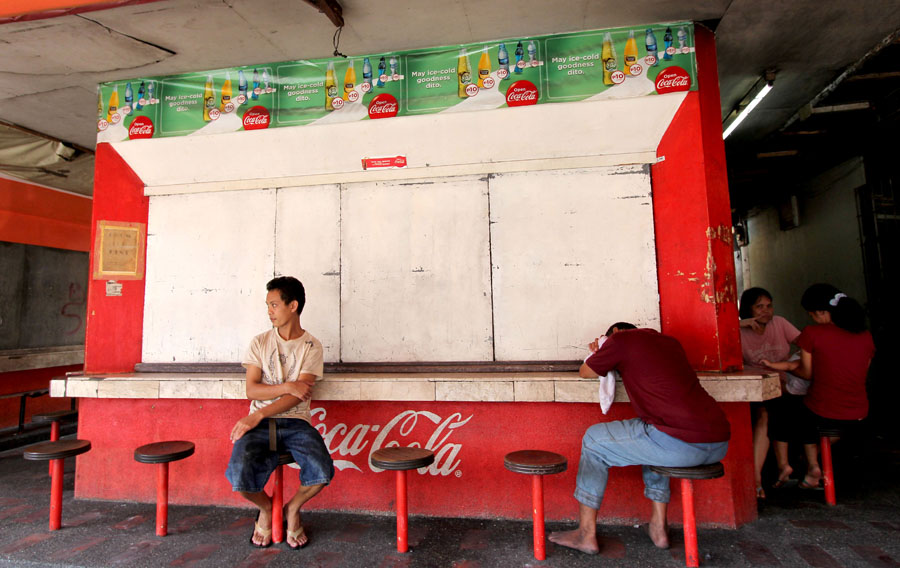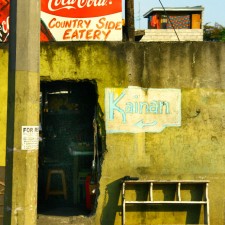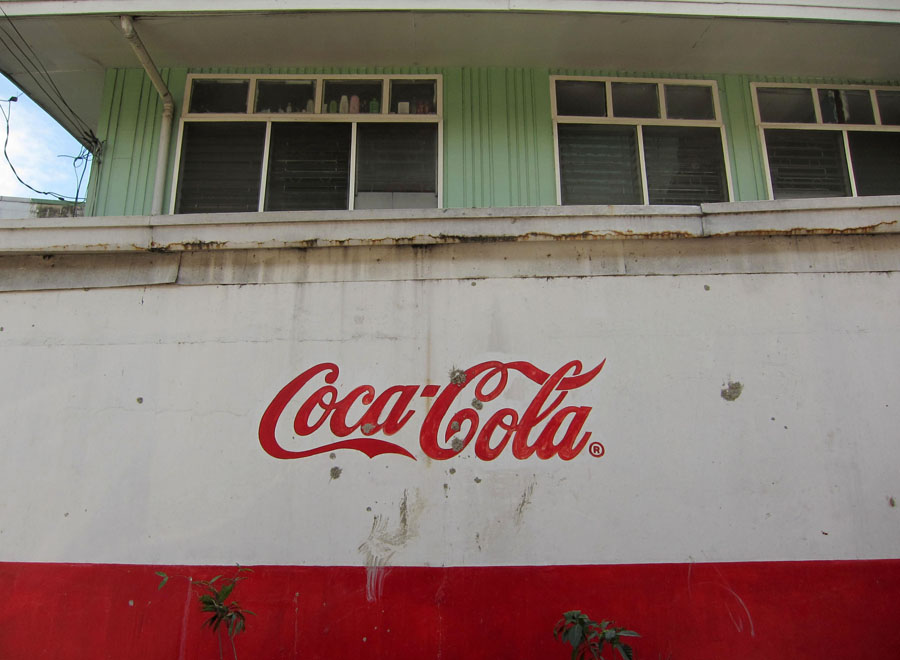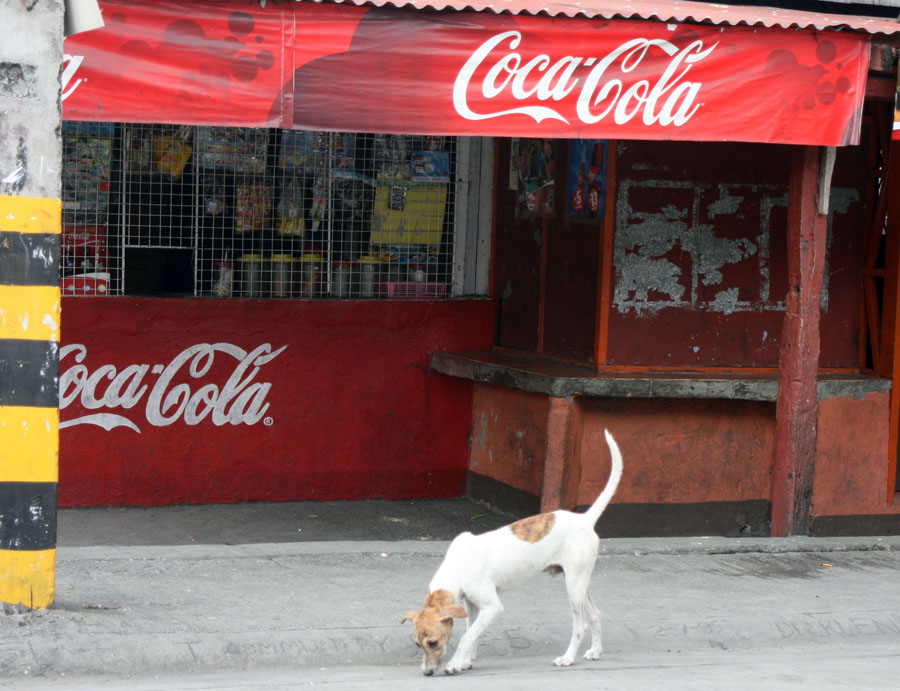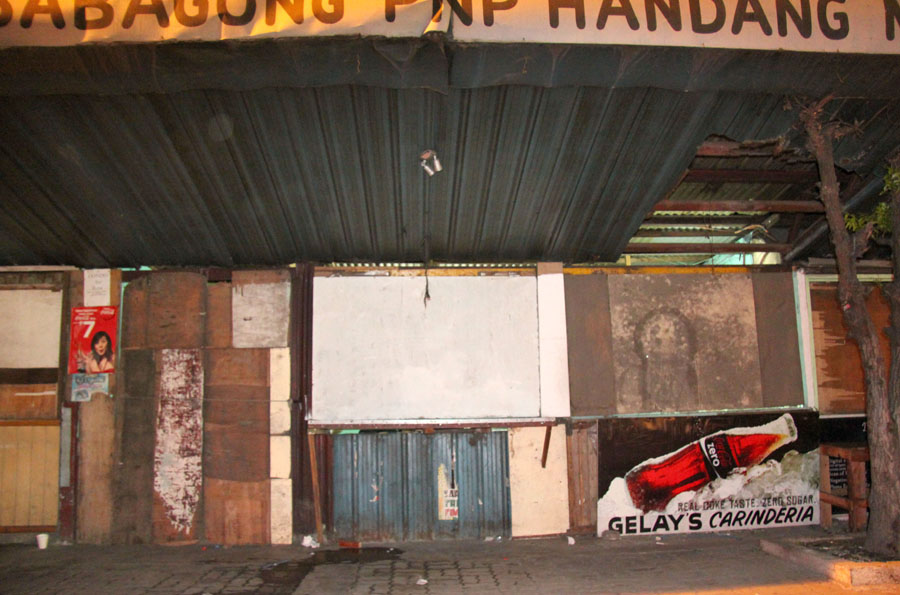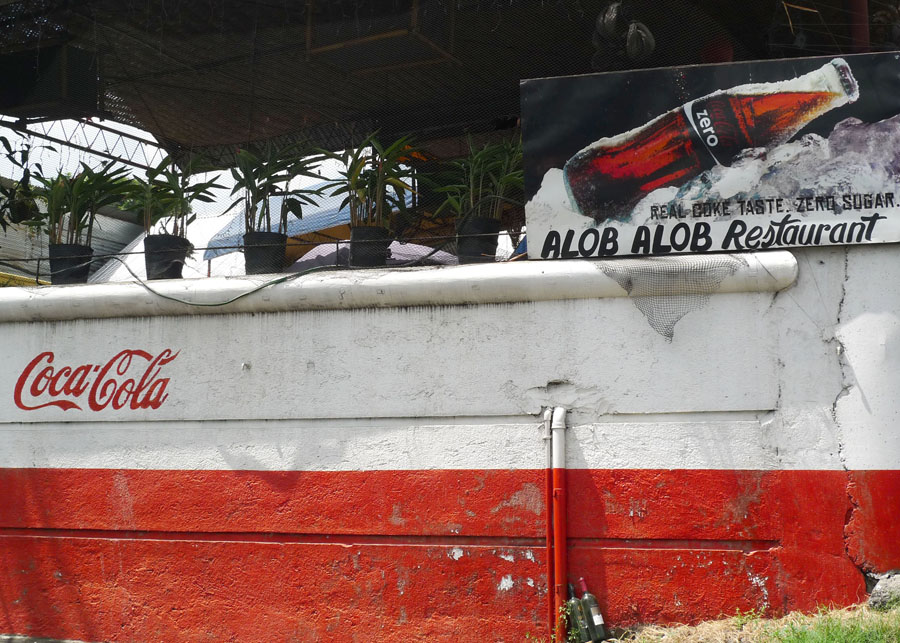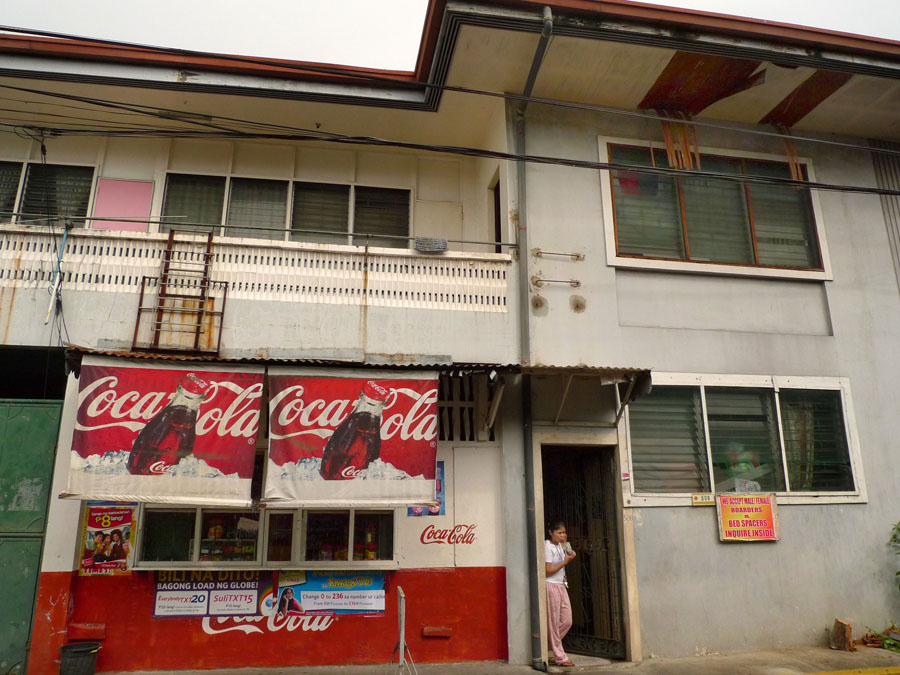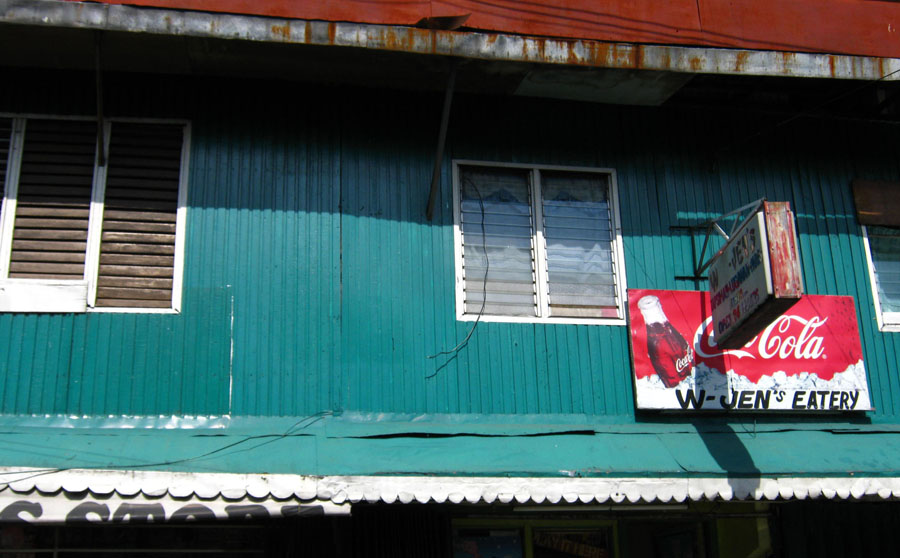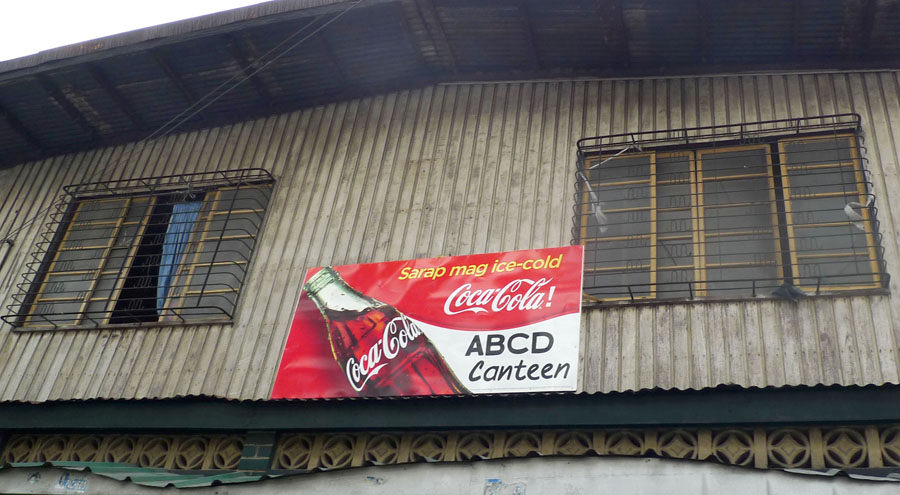Coca Cola logos are very dominant in the Philippine landscape. I chose to photograph them because they’re very distinctive, and while I know other countries also have Coke ads, I don’t think they’re anywhere as pervasive as the Coke banners, streamers, metal signs, tarps, posters, logo placements beside store names as I see here in the Philippines.
I’ve also included a few photos of houses adorned with the logos of other soda companies. But Coke’s is really the most popular. I photographed these Coca Cola houses and structures over a period of six years, 2007-2013. These were shot in many different places. You could just walk into any random street and spend half a day shooting and probably get 20 Coke shots, but I wanted to make a set of varied Coca Cola houses from different places.
About myself:
Prior to 2007, I made animation films in Taiwan, some of which were shown in international festivals. I also had one of the earliest English language podcasts on Taiwan that garnered a small following. However, I had to leave Taiwan that year and return to the Philippines to work for our family’s small business.
After I returned, I could no longer continue doing my films, podcasts, and update my website because of time and other logistical factors. I didn’t want to stop doing art altogether though, so I decided to use photography to document aspects of my home town that are not usually paid attention to. Since then I’ve had a photographic column at a weekly paper (before that paper folded in 2010) and had been invited to show my photos at a couple of forums on urban life.
I haven’t shown in more exhibits because I am not a “professional” photographer in the sense that this isn’t where i derive my income from. My main avenue of showing photos is really just through my website. But that doesn’t mean I’m just a dilettante hobbyist who brings my camera to the streets of downtown Quiapo to shoot homeless people for a day, put it up on Flickr, and call it documentary photography.
I’m very serious about what I do, which is to capture a side of Manila and the Philippines that’s more than just homeless people, beautiful women in exotic town fiestas, straw huts in tropical beaches, people whacking themselves bloody during Lent, hundred year old churches with dark HDR skies, etc. Nothing wrong with those (except if they end up exoticizing and fetishizing their subjects), but that isn’t ALL what Manila and the Philippines is, just like New York City isn’t just Times Square.
Some of my photo projects aren’t necessarily of things people are totally unaware of. In fact, as I mentioned above, Coca Cola houses are everywhere. But they’ve sort of become invisible/ ignored because of their ubiquity. And I thought it would be a good idea to put together a series of photos taken of them from different places around the Philippines.
Two recent series of mine include Street Corner Pocket Virgin Mary Grottoes (http://gemismyname.com/gallery/street-side-grottos/) and No Parking (http://gemismyname.com/gallery/no-parking/), which is ongoing. No Parking is NOT just of a bunch of P signs with a slash on them.
I also photograph as much graffiti and street art as I can. Before I returned in 2007, Manila had very little good street art (not including pseudo graffiti murals sponsored by corporations). It’s usually scrawled cuss words, gang names, or political rants. But 2008 onwards, I noticed the graffiti on the walls getting more colorful, artistic, and adventurous.
I’ve documented them whenever I see them, even if the photos are a bit gray at times because I only had a camera phone with me. If I waited to return with a DSLR, the graffiti might be painted over or pasted with some political flyer ad already.
Other things I document continuously are storefronts/ facades, and political signs on walls. These are not just simple campaign ads during election season unlike in other countries. They’re big block letters of politicians’ names in every conceivable venue. Rooftops, walls, basketball courts, banners, streamers, street poles, telling you “hey, this paved street/ basketball court, waiting shed is courtesy of so and so.” I felt sad doing that so I paused it for a bit while I continued my Coca Cola houses and street art documentation. I’ll go back to it eventually. [Official Website]
One thing I’m trying to hone more is my skill in photographing people. I want to document people interacting with their environment. My first specific project in that regard is something I started four years ago but haven’t completed yet. It’s on makeshift basketball hoops around the Philippines. The backboard is DIY, made of some plywood, the hoop is some metal they bent together, nailed to a coconut tree. I have around four good photos of that so far, which doesn’t yet comprise a complete series. I also want to document little street pick up games.



